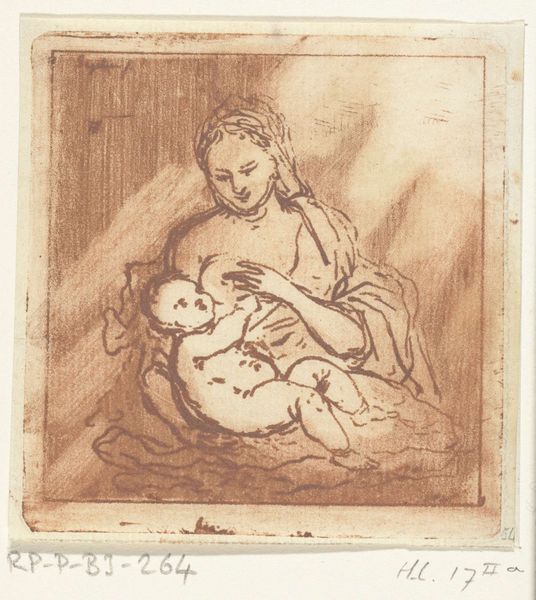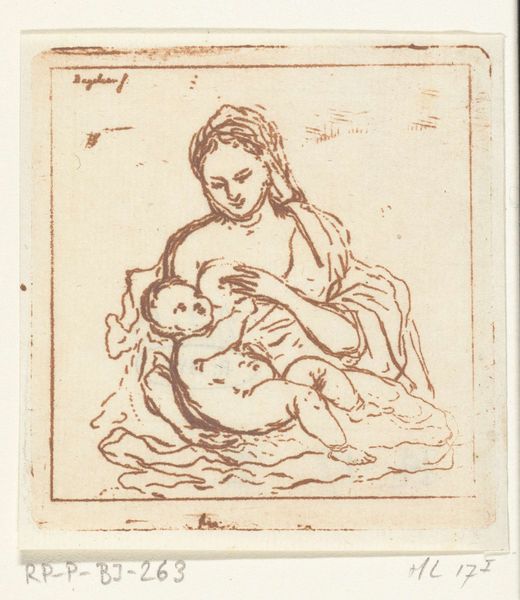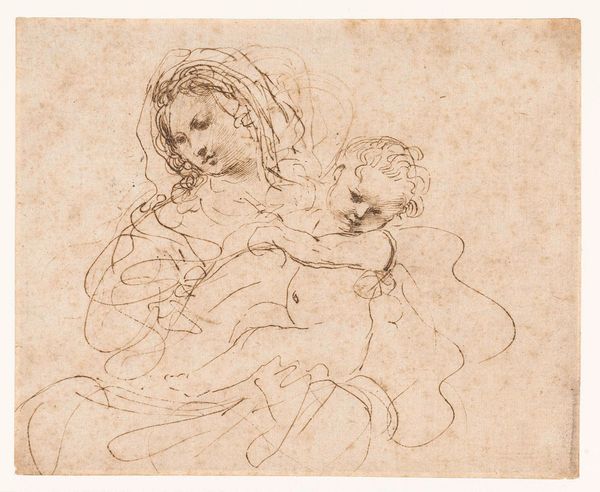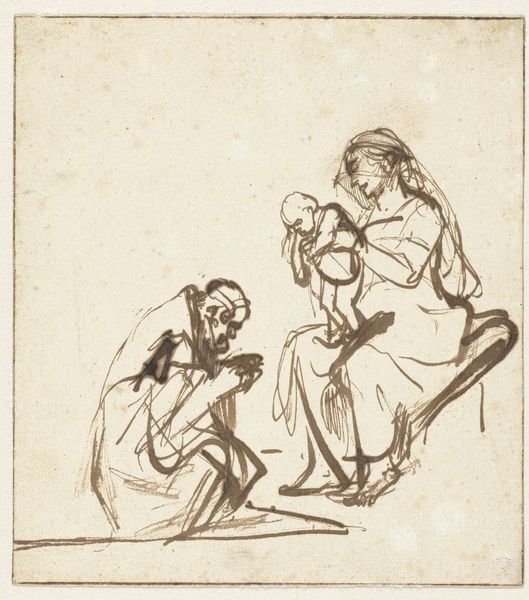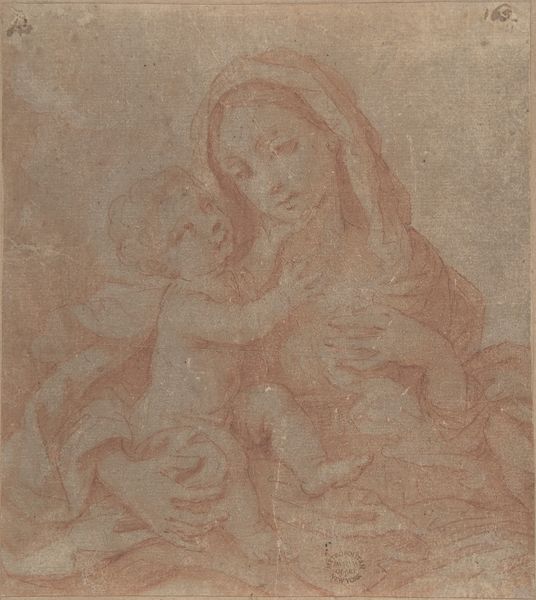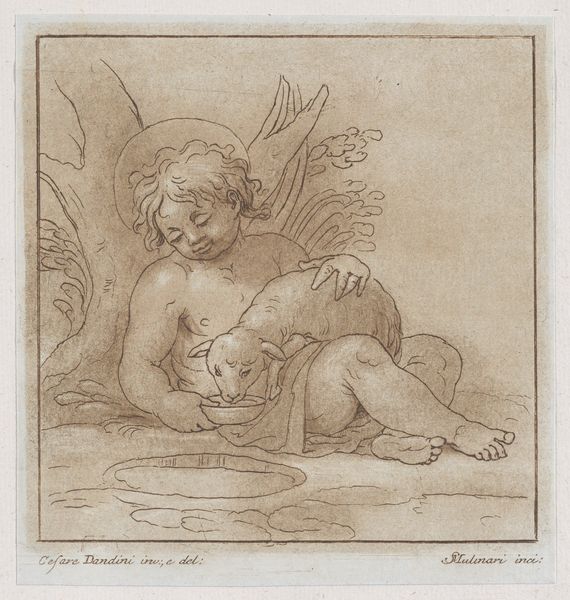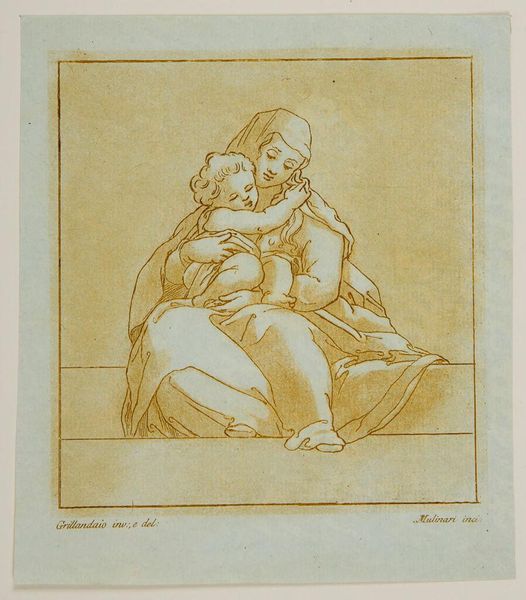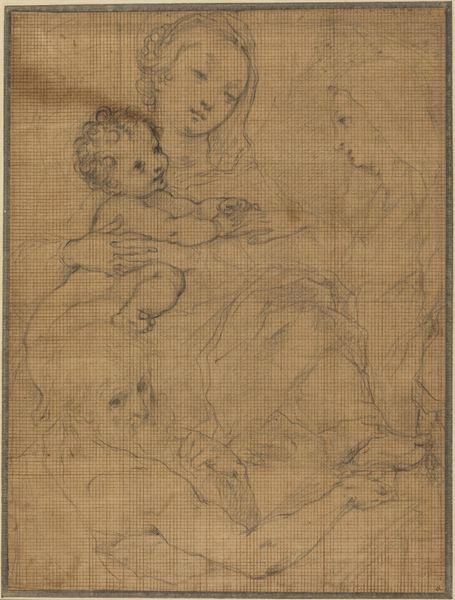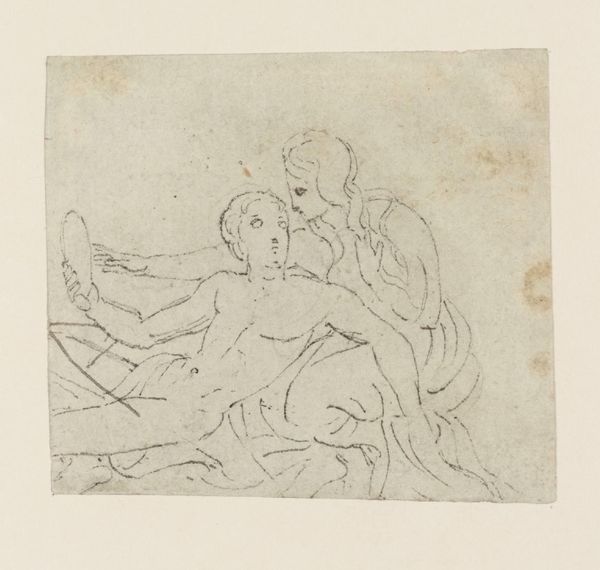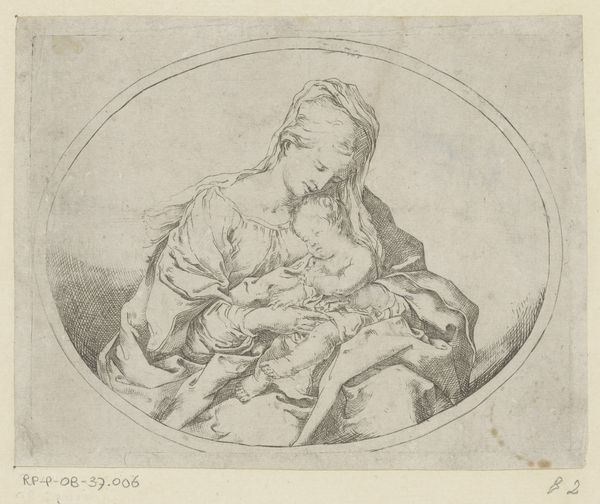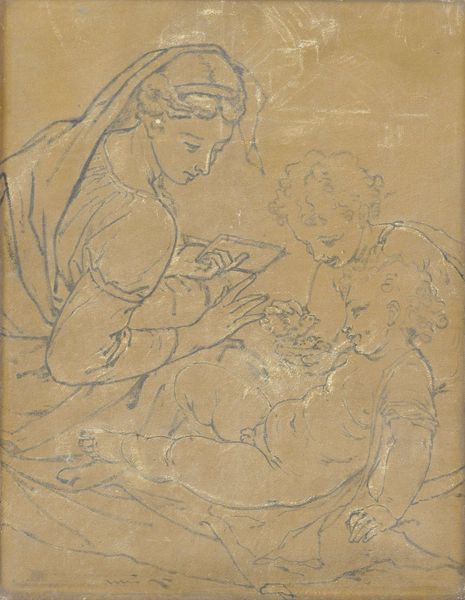
drawing, ink, pen
#
portrait
#
drawing
#
narrative-art
#
pencil sketch
#
figuration
#
ink
#
ink drawing experimentation
#
romanticism
#
pen-ink sketch
#
pen
#
portrait drawing
Dimensions: height mm, width mm
Copyright: Rijks Museum: Open Domain
Curator: We're looking at "Maria geeft Christus de borst" by Ernst Willem Jan Bagelaar, made sometime between 1798 and 1837. It's rendered in pen, ink, and pencil. Editor: My immediate sense is of intimacy. The scale, the gentle strokes, it all contributes to this feeling of a quiet, private moment. Curator: Indeed. The composition centers the figures, drawing our eye to their connection. The artist uses line weight strategically, notice how the heavier lines define the mother's form, anchoring her visually. Editor: Absolutely. The symbol of the Madonna and Child has resonated for centuries, embodying themes of maternal love, nurture, and divinity. Breastfeeding adds another layer—a powerful, life-sustaining act. Curator: Precisely. And consider how Bagelaar handles light and shadow. The soft hatching creates a sense of depth without overpowering the delicate lines, an interesting stylistic tension. Editor: There's also a fascinating dialogue between the ideal and the real here. While the subject carries enormous cultural weight, the style is remarkably immediate, like a captured glimpse of ordinary life elevated to the mythic. I feel its historical moment is important: this Romantic image presents a very modern conception of motherhood that is stripped of religious affectation, while using Renaissance models. Curator: A beautiful point. That contrast between the immediate and the timeless really encapsulates what makes this piece so compelling. Editor: Yes, the drawing’s intimacy is startling, as if capturing the iconic is only possible through attention to lived, shared reality. Curator: I agree entirely. It’s an image that quietly reverberates long after you've stopped looking at it.
Comments
No comments
Be the first to comment and join the conversation on the ultimate creative platform.
